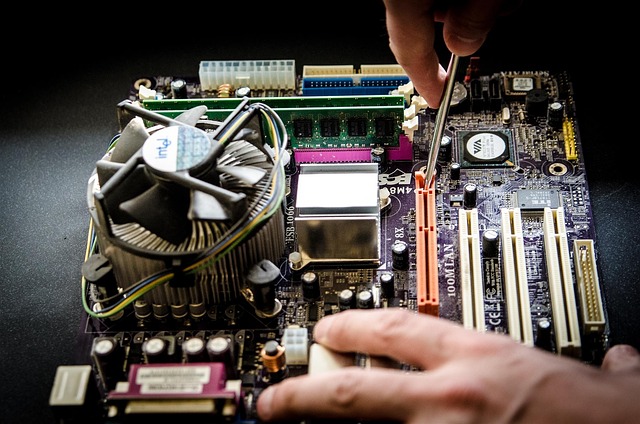Reviving the Pavement: Essential Techniques for Road Repair and Maintenance
Pavements serve as the backbone of modern transportation systems, facilitating safe and efficient movement for vehicles and pedestrians alike. However, over time, wear and tear from traffic, weather conditions, and underlying soil issues can lead to pavement deterioration. Regular road repair and maintenance are critical to ensuring the longevity and safety of our roadways. In this article, we will explore essential techniques for road repair and maintenance, enabling communities to preserve their infrastructures and enhance public safety.
The Importance of Road Maintenance
Maintaining roadways is not merely a question of aesthetic appeal. Well-maintained roads contribute to improved safety, reduced vehicle operating costs, increased property values, and enhanced overall quality of life. Neglecting maintenance, however, can result in severe consequences such as accidents, increased travel time, and higher repair costs in the long run. Understanding the importance of timely maintenance is crucial for community planners, officials, and citizens alike.
Common Types of Pavement Distresses
Pavements can exhibit various forms of distress, each requiring specific repair methods. Some of the most common types of pavement distresses include:
- Cracking: This is often one of the first visible signs of pavement deterioration, resulting from environmental factors and traffic loads.
- Rutting: This occurs when the pavement surface is displaced due to repeated loading, leading to grooves or depressions.
- Potholes: These are depressions or holes that form when the pavement surface weakens, often exacerbated by moisture penetration.
- Surface Distress: This includes various issues such as raveling, flaking, or scaling, usually caused by weather conditions and traffic.
- Uneven Settling: Displacement of the pavement due to underlying soil issues, leading to bumps or dips that can disrupt vehicle travel.
Essential Techniques for Road Repair
To effectively address pavement distresses, several repair techniques can be employed, each suited to specific conditions and types of damage. Here are some of the most effective methods:
Patch Repair
Patch repair is one of the most common techniques used for addressing localized damage such as potholes and small cracks. There are several types of patching techniques:
- Hot Mix Asphalt Patching: This method involves using a mixture of heated asphalt and aggregates. It is ideal for repairing potholes and larger crack areas, providing long-lasting results.
- Cold Patch Repair: Cold patch materials can be applied without the need for heating. This technique is often used for temporary repairs until more permanent solutions can be applied.
- Infrared Repair: Heat is applied to soften the asphalt surface, which is then reworked and compacted to create a seamless repair.
Crack Sealing
Crack sealing is an essential maintenance procedure that involves filling cracks with a specialized sealant to prevent moisture intrusion, which can exacerbate deterioration. Effective crack sealing techniques include:
- Routing: This method involves creating a V-shaped groove along the crack to improve sealant adhesion.
- Cleaning: Ensuring that the crack is free of debris, dirt, and moisture before applying the sealant is crucial for a successful repair.
- Sealing: A flexible sealant is applied to the crack, allowing for movement and expansion without breaking the seal.
Resurfacing
Resurfacing refers to applying a new layer of asphalt over the existing surface. This technique is particularly beneficial for older pavements exhibiting widespread surface distress. The process usually includes:
- Surface Preparation: This involves cleaning the existing surface and making necessary repairs, such as patching and crack sealing.
- Applying New Asphalt: A new layer of asphalt is placed over the prepared surface, enhancing both durability and aesthetics.
- Compaction: The new surface is compacted to ensure proper bonding and extended life.
Full Reconstruction
When pavements have reached a critical state of deterioration, full reconstruction may be necessary. This involves removing the existing surface and base material, replacing it with new materials, and restoring the pavement to its original design. Important steps in the reconstruction process include:
- Assessment: A thorough evaluation of the roadway conditions and soil stability.
- Removing Existing Materials: Safe removal and disposal of the compromised surface materials.
- Base Preparation: Installing new base layers that ensure proper drainage and load capacity.
- Final Surfacing: Applying final pavement layers, usually utilizing high-quality asphalt or concrete.
Effective Maintenance Practices
Consistency in maintenance practices is essential for prolonging the life of pavements. Here are key practices that enhance the effectiveness of road maintenance:
Routine Inspections
Regular inspections allow for early detection of emerging issues. Ideally, these inspections should occur every six months to evaluate the condition of the road and identify necessary repairs.
Establishing a Maintenance Schedule
Implementing a systematic maintenance schedule based on the specific needs of the road and seasonal variations can help optimize repair efforts and allocate resources efficiently.
Utilizing Technology for Monitoring
With advancements in technology, using drones and sensors to monitor road conditions in real-time has become a viable option. This not only increases efficiency but also allows for more accurate assessments of road conditions.
The Role of Community Engagement
Encouraging community involvement in road maintenance initiatives can amplify the effectiveness of efforts. Public awareness programs can educate citizens about the importance of reporting road issues, participating in clean-up efforts, and advocating for necessary funding.
Conclusion
Reviving the pavement is a multi-faceted endeavor that requires a combination of timely intervention, effective techniques, and community engagement. By implementing the essential methods of road repair and maintenance discussed in this article, we can create safer, more durable, and more aesthetically pleasing roadways, enhancing the quality of life for all who rely on them. Investing in proper maintenance now will yield dividends in the future, safeguarding our roads from deterioration and ensuring that they remain functional for generations to come.
References
For further reading on the topic, consider exploring these resources:
- National Asphalt Pavement Association: Best Practices for Asphalt Pavement Repair
- Federal Highway Administration: Pavement Preservation Techniques
- American Public Works Association: Road Maintenance and Repair Guidelines


